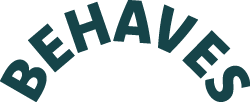The rise and rise of behavioural science
Humans using psychological insights to alter the behaviour of other humans is nothing new.
What is new is the breadth of its application. From the first ‘nudge unit’ in the UK, in 2010, to another 200 or so dotted around the globe within a decade. From the publication of Thaler and Sunstein’s Nudge in 2008, to bookshelf-filling amounts of nudgy books written over the next fifteen years. From a handful of companies using behavioural science, to hundreds and thousands.
The importance of being ethical
Different approaches, same goal
"We’re also aware of how ethical guidelines govern our work and, as corny as this may sound, we’re in the business of doing good in the world."
FORGOOD framework
F
Fairness
Does the behavioural intervention treat its target audience fairly? Does it attempt to fairly manage conflicts of interest between target audiences, beneficiaries and other relevant stakeholders?
O
Openness
Is the behavioural intervention disclosed or evident to the target audience?
R
Respect
Does the behavioural intervention respect the target audience’s autonomy, dignity, freedom of choice and privacy within the context of their relationship with the company?
G
Goals
Does the behavioural intervention seek to improve outcomes for target audiences, beneficiaries and/or other relevant stakeholders of the company?
O
Opinions
Does the behavioural intervention pass the ‘front page test’ of public opinion?
O
Options
How does the financial and non-financial cost/benefit assessment compare to other options?
D
Delegation
Does the company have the regulatory right and ability to implement the behavioural intervention?
Some ethical conundrums
So: is your behaviour change initiative one you’d be happy to be on the end of and would it improve your life? There will nearly always be fuzzy areas, but these areas become less fuzzy with ethics on your side. When it comes to rolling out any behaviour change programme, you’ll want to interrogate what you’re doing and why.




